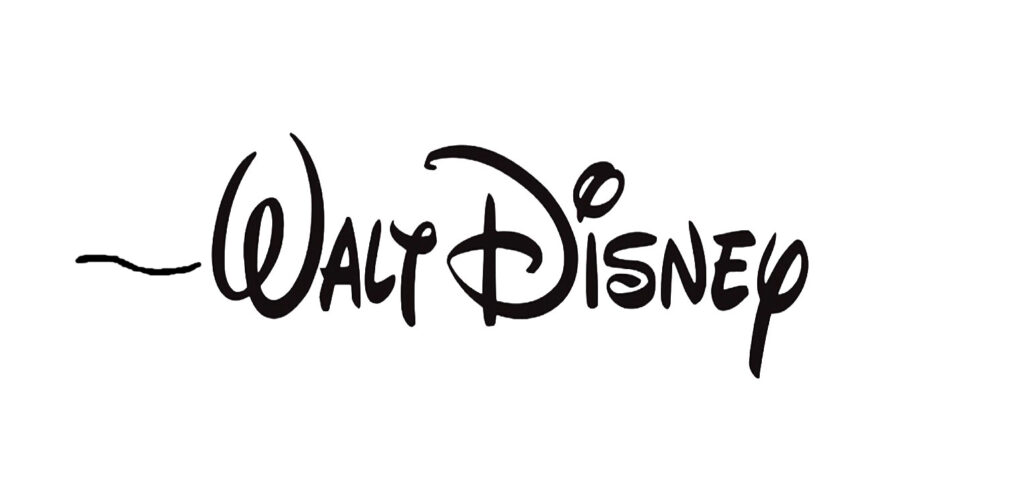ADDING SOUND & COLOR
Over the course of his career Walt avidly pursued technologies that would enable him to invite his audiences ever more immersively into his revised realities – whatever fantastic realms his imagination conjured.
Disney’s drive for technical perfection, one of the most important elements in his career, manifested itself early. Disney… owed each leap forward… to his ability to seize upon… technological advances and exploit them while his rivals were still fearfully contemplating their possible drawbacks.[1]
For starters he was the first to wed sound precisely with the images on the screen in 1928’s Steamboat Willie – Mickey Mouse’s public debut.
Disney… saw that sound was not merely an addition to the movies but a force that would fundamentally transform them.[2]
Not just sound effects but also music became an especially pivotal element. In their lavish tome Disney Animation, the Illusion of Life two of Disney’s oldest of the “Nine Old Men” his supervising animators Ollie Johnston and Frank Thomas put it this way:
“…Music is so closely associated with most of the major events in our lives – nursery songs, campfire songs, school songs, religious songs, dances, weddings, and finally, funerals – it becomes the soul of our memory, forever coloring our impressions …This becomes a vital element in making fantasy worlds believable – not just as a place observed from the comfort of our theater seats, but a region we actually inhabit for the duration of the film.”[3]
In 1932 Disney added color for the first time in Flowers and Trees – one of his “Silly Symphonies” series of short cartoons which alternated with the Mickeys and culminated eventually in Fantasia. Flowers and Trees had already been animated half-way through in black-and-white. Judging it was the ideal vehicle to debut color in his cartoons Walt recalled the whole project and started all over using the new 3-color process called Technicolor. His early enthusiasm earned his studio two years’ exclusive rights for using Technicolor’s process in animation. That contract was renewed for an additional 5 years.
Walt was among the first to anticipate the marvelous potential of color on film. “At last!” he exclaimed, “We can show a rainbow on the screen!”[4] Immediately he began to cultivate an increasingly dramatic exploitation of color.
Disney was the first to realize that color in motion pictures need not bear any resemblance to color in real life, that objects on the screen could be endowed with any pigmentation dictated by the imagination. Furthermore, he recognized that color on the screen need not be static, but could move, and that such mobility, affecting the emotions, produced new visual experiences…[5]
Walt became aware that according to its conventional psychological or emotive evocations color could help in guiding and intensifying audience responses. Color stylist for Fantasia John Hench explains:
Color tells a story… You have to develop a spectrum for a movie because people seem to like a sense of balance in what they are viewing and experiencing. Working on this film taught me about the relationship of color and music to emotion.[6]
Blues and purples elicit serenity: frequently they imbue the backgrounds behind romantic scenes as for example the “Belle Notte” sequence in Lady and the Tramp or the pastoral courtships in Fantasia. Reds re-enforce moments of intense excitement as for example the nearly monochromatic fight between the cockney thugs and dogs Pongo and Perdita in 101 Dalmatians or the “World is Born” ballet in Fantasia with its syncopated bubbling lava and flaming volcanic fissures. Yellows, browns and greens brighten moments of reassurance and happiness. In Snow White for example after the princess’ harrowing ordeal alone in the dark menacing forest she is guided by friendly animals to the Dwarfs’ cottage against backgrounds of sunny verdant woodland. In Bambi the pastels that color the fluffy “Seventh Heaven” of love’s innocent first blooming are quickly strikingly dispelled as the young buck defends his new mate against the harassment of a menacing older male – a duel in stark black red-edged silhouettes against flashes of brighter colors. This latter scheme is further refined in Lady and the Tramp during the realistic and chillingly gruesome fight between dog and rat.
[1] Schickel, Richard: op. cit., p.85.
[2] Schickel, Richard: op. cit., p. 106.
[3] Johnston, Ollie, and Thomas, Frank; op. cit., p.286.
[4] Culhane, John: op.cit., p. 159.
[5] Jacobs, Lewis, film historian as quoted in Maltin, Leonard: op cit., p. 9.
[6] As quoted in Korkis, Jim: “In His Own Words: John Hench on Fantasia”, cartoonresearch.com, September 13, 2019.
